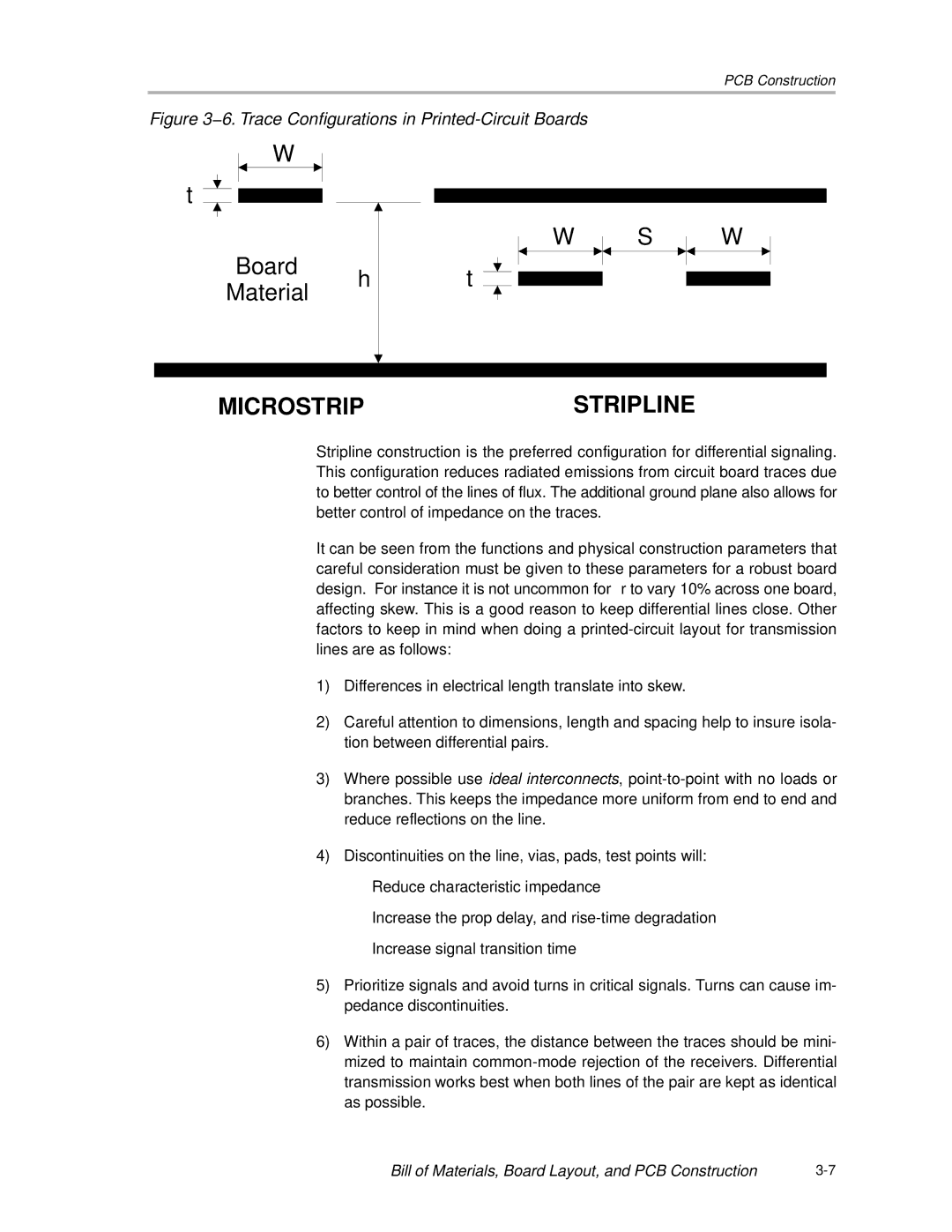
PCB Construction
Figure 3−6. Trace Configurations in Printed-Circuit Boards
W
t
Board h
Material
W
t
S
W
MICROSTRIPSTRIPLINE
Stripline construction is the preferred configuration for differential signaling. This configuration reduces radiated emissions from circuit board traces due to better control of the lines of flux. The additional ground plane also allows for better control of impedance on the traces.
It can be seen from the functions and physical construction parameters that careful consideration must be given to these parameters for a robust board design. For instance it is not uncommon for εr to vary 10% across one board, affecting skew. This is a good reason to keep differential lines close. Other factors to keep in mind when doing a
1)Differences in electrical length translate into skew.
2)Careful attention to dimensions, length and spacing help to insure isola- tion between differential pairs.
3)Where possible use ideal interconnects,
4)Discontinuities on the line, vias, pads, test points will:
J Reduce characteristic impedance
J Increase the prop delay, and
J Increase signal transition time
5)Prioritize signals and avoid turns in critical signals. Turns can cause im- pedance discontinuities.
6)Within a pair of traces, the distance between the traces should be mini- mized to maintain
Bill of Materials, Board Layout, and PCB Construction |
